

Text by Hirokuni Kanki
Photos courtesy of JAMSTEC
ー
If readers want to think about the origin of life along with you, what basic knowledge would they need?
Mr. Takai
Firstly, there are two key ideas that biologists hold. One idea is that the essence of life is information. This is the view that the transmission of stored information is of central importance. That is, that genetic information passed on in the form of DNA or RNA is vital. So, when we think about the origin of life, we focus on nucleic acids.
On the other hand, there are researchers who believe that the fact that we are alive in this moment is the important point. In the case of humans, about 20,000 proteins are actively working to keep us alive at any moment, establishing a dynamic equilibrium. This is the most important fact about life. From this viewpoint, the origin of life has nothing to do with genes. These are the ultimate conclusions I have drawn from my research on deep-sea hydrothermal systems.
Huh? So, genes have nothing to do with the origin of life?



Mr. Takai
Correct! For life on Earth today, genetic information is effectively the most important factor, without doubt. However, the forms of life that arose four billion years ago did not necessarily need to pass on information. My conclusion is that all they had to do was just live.
You could say that the arising of planets and the emergence of life were physical phenomena. Or in other words, I believe that the origination of life was a physical phenomenon, which is a rather essential concept. In contrast, what came after the emergence of life are just stories.
Or to put it the other way around, the fact that living things came to have genes in that process is very significant, isn’t it?



Mr. Takai
Right! Life originated with chemical reactions, so it is a physical phenomenon. But, when the leap from mere physical phenomenon to life happens, there’s no way to create stories without genes.
This is quite different to the hypotheses we find in textbooks, isn’t it?



Mr. Takai
Until now, concepts about the origin of life have focused basically on how genetic information gets created. DNA emerged later; first there was RNA. Since it seems that RNA could be produced in hot springs, there is a theory that a prototype form of life originated in hot springs. A wide variety of materials fall to the Earth’s surface from outer space and hot springs can be considered good sites for material accumulation.
Deep-sea hydrothermal systems are not good material accumulation sites in this sense, but we found that somehow the necessary materials can be produced there. Sugars, alkalis, and probably even amino acids and nucleic acids can be made deep below the sea. These necessary building blocks of life can be made on site, unaffected by the unstable supply from the sky. Like this, the most basic metabolic system was formed, and a prototype life form, so to speak, was established, simply by a process of metabolism, division, and regeneration.
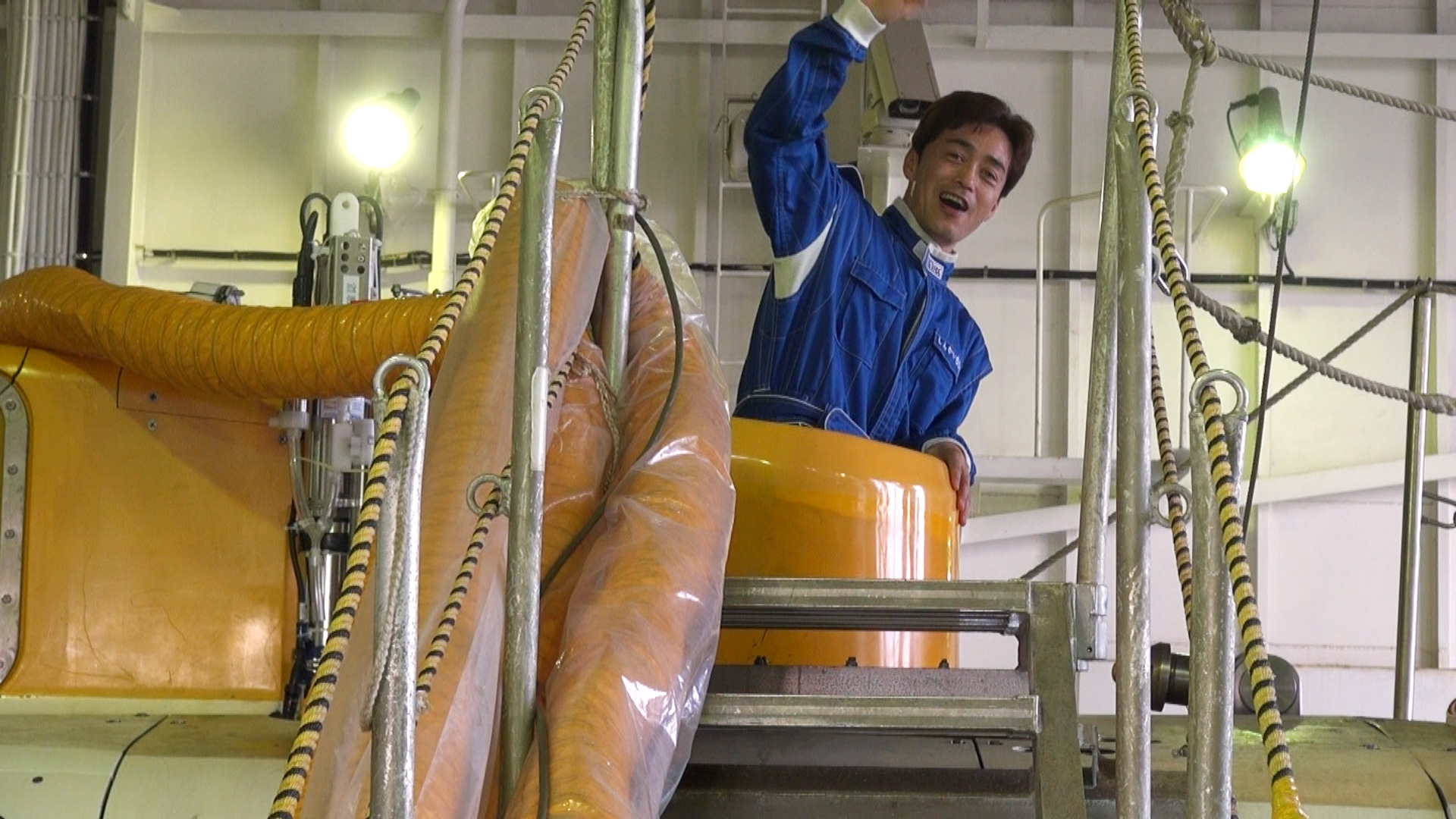

©︎ JAMSTEC
ー
The theory that life originated in deep-sea hydrothermal systems is based on this kind of process. Is that right?
Mr. Takai
My latest scenario is that a life form only with a metabolic system had already emerged in deep-sea hydrothermal systems. Later, over a long span of time, genes arrived fortuitously from somewhere. I believe that the genes and the prototype life form stuck together, eventually becoming our last universal common ancestor, or LUCA.
Are you saying that enzymes were not involved in those primeval chemical reactions in the deep sea?



Mr. Takai
That’s right! Initially, there was just a metabolic process that did not depend on enzymes, involving minerals and electrochemistry. Later, this was replaced by proteins linking together amino acids, with a film of oil making up the outermost surface. And that was the moment that life began, I think. I am now working on trying to prove this hypothesis.
What we’ve been able to reproduce so far using just minerals and electrochemical characteristics, without enzymes, is the conversion of carbon dioxide to carbon monoxide, and carbon monoxide to citric acid cycle (aka TCA cycle) reactions. Almost all citric acid cycle reactions can be generated non-enzymatically.
I see! I am very interested in the process of how enzymes, which were initially not needed, came to be so essential.



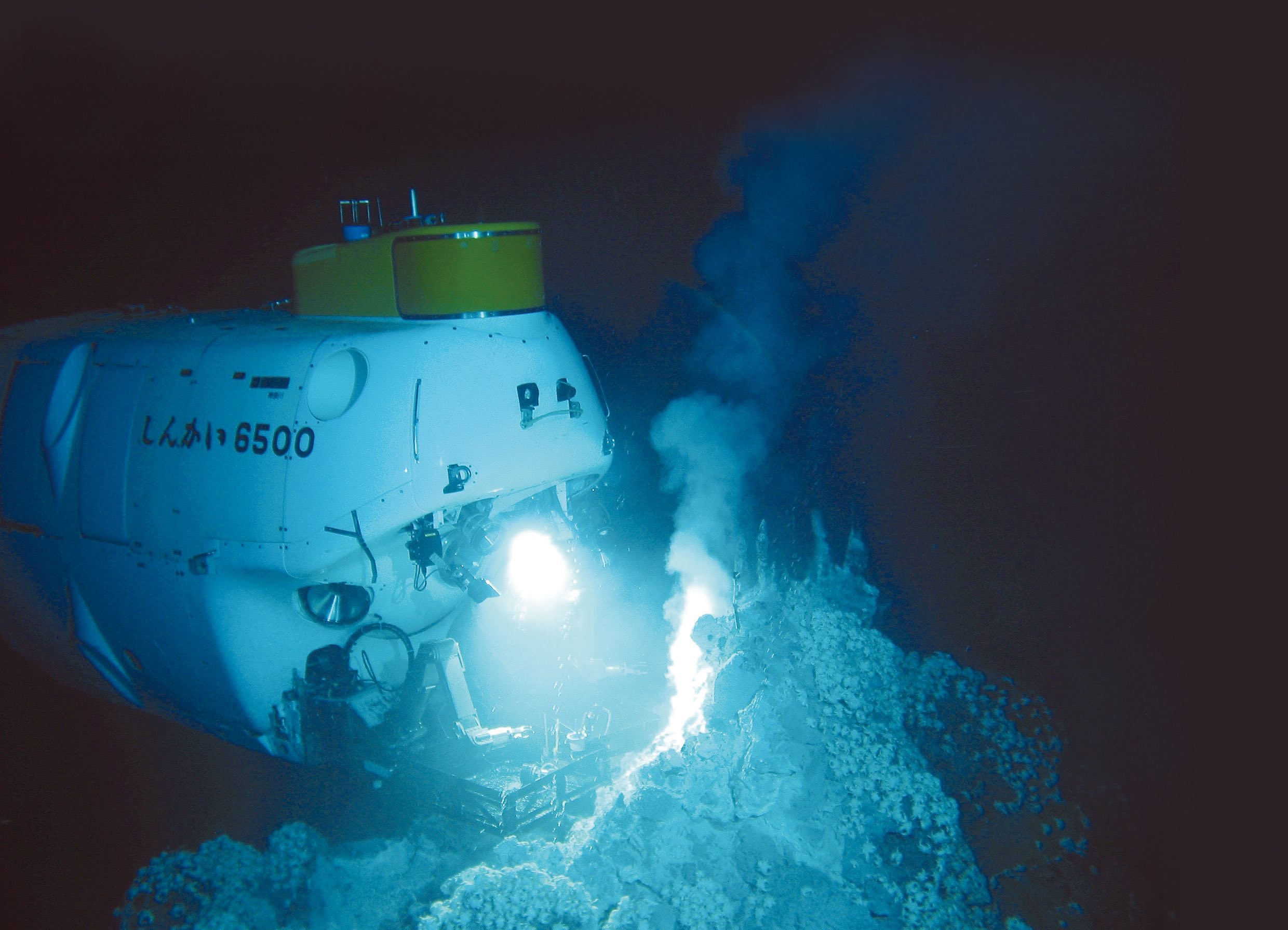

©︎ JAMSTEC/NHK
Mr. Takai
From the citric acid cycle, the process proceeds further, becoming like the metabolic system of the human body, producing amino acids, lipids, and so on. I don’t think the logic of this pathway was taught in high-school biology or chemistry classes, but this process was somehow established in the natural environment it seems.
One of the conditions that explains why life began in deep-sea hydrothermal systems is electromotive force. It is only in deep-sea hydrothermal systems that a natural potential of at least 1 V can be created. The electrical conductors capable of carrying the electricity are the sulfide chimneys deep in the sea. According to this line of reasoning, the first metabolic processes could only have arisen in deep-sea hydrothermal systems, not in hot springs.
The hypothesis that deep-sea hydrothermal systems are the source of the metabolism of living things was first posited in the latter 1980s. However, we added some radically new concepts, such as the idea of electrochemistry, the idea that complex redox reactions can be governed by the various electric potentials generated on the surface of minerals, and also the idea that these can occur as chain reactions.
That’s extraordinary! So according to the process you are describing, when did my enzyme ancestors come into the picture?



Mr. Takai
When the prototype life forms first arose, enzymes were not needed, but I think your earliest ancestors originated in deep-sea hydrothermal systems. They worked hard in those environments.
Certainly, life would not have arisen without enzymes. With enzymes present, the speed and efficiency of activity would have increased dramatically, and the time taken for organisms to reproduce a new generation of themselves became shorter. With the arrival and connection of genes, enzymes were then able to leave behind something identical to themselves for the first time. That is the LUCA.
So, the prototype life form, which until then was just a physical phenomenon—chemical reactions—came to life when it encountered genes and enzymes, or rather, when there was a story to be passed on. I find that deeply moving somehow.



ー
You are also known for your work in astrobiology, having worked for a time at the Japan Aerospace Exploration Agency (JAXA).
Mr. Takai
Yes, but my purpose was to study the origin of life, not to do aerospace research. The reason I needed to explore space was that only one kind of life exists on Earth.
Although there are 10 billion species of life forms, there is only one pattern of life here. According to scientific principles, as long as only a single case of a phenomenon exists, that thing is not considered verified. We therefore need to find a second or third example of the phenomenon for corroboration, by induction and deduction. Thus, if we want to unravel the mystery of the origin of life, we have to find life beyond the Earth.
Does that mean seeking conditions that are similar to those on the Earth?



Mr. Takai
On a cosmic scale, there are very few planets that are at an appropriate distance from their suns; most planets are “ice worlds.” However, recent space observations have revealed that deep-sea hydrothermal systems can exist even on such icy planets. We could therefore hypothesize that deep-sea hydrothermal conditions are a universal feature of the cosmos.
Now, if we suppose that life on Earth necessarily arose in deep-sea hydrothermal systems, then maybe life has inevitably arisen in deep-sea hydrothermal systems in other parts of the universe too. In other words, such a finding would demonstrate the universality of life.
ー
So, we are going to find out if there is any life in these “ice worlds.” I believe that one candidate for this study is Enceladus (the second nearest moon of Saturn), which you mentioned in your book.
Mr. Takai
Enceladus is the most cost-effective choice for exploration.
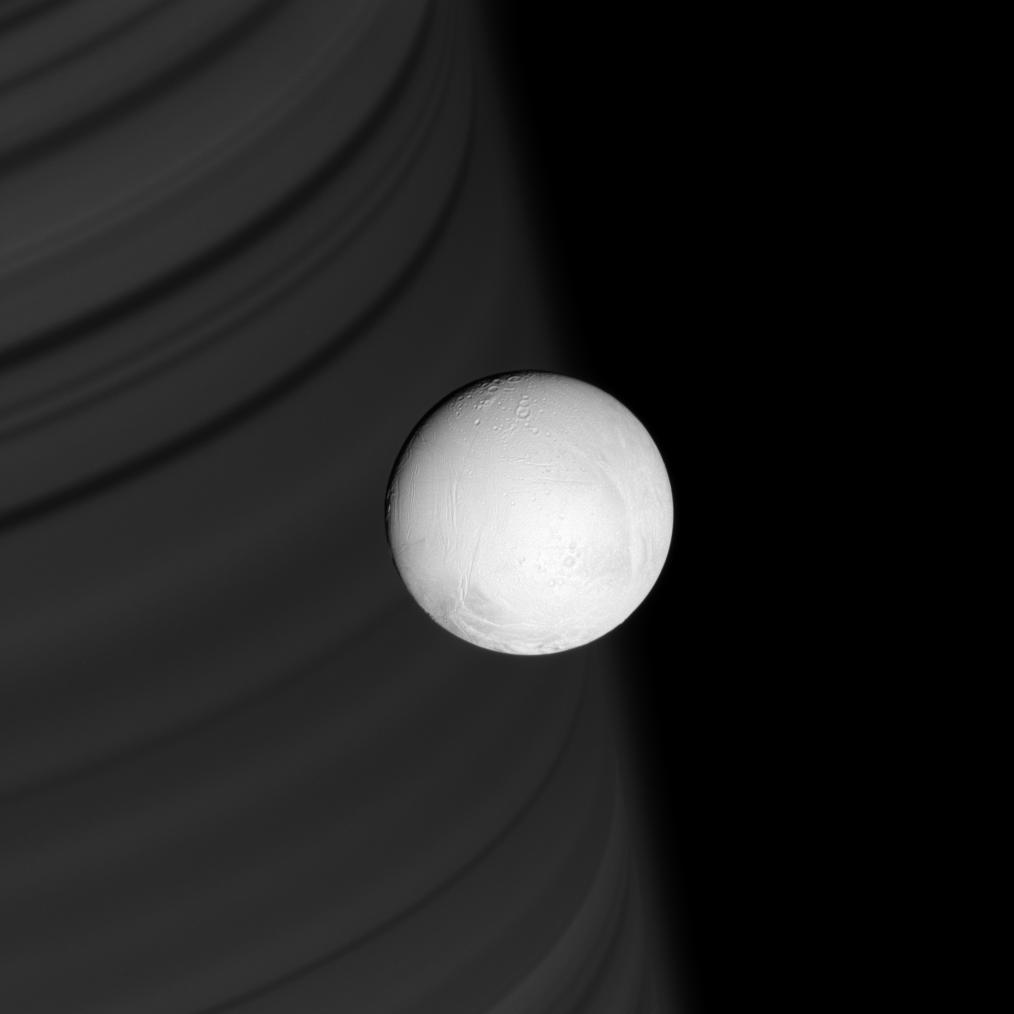

©︎ NASA/JPL/Space Science Institute
When will we be ready to explore Enceladus?



Mr. Takai
If we had the money, we could start right away. But it would cost ¥100 billion ($800 million), and even then the chances of success would only be fifty-fifty.
I really look forward to the time when space travel and deep-sea travel will be a common reality. Until then, I hope that more money can be raised for this kind of dream research. Oh, by the way, I guess that the fact that enzymes are made of amino acids is one of the verified patterns of life on Earth.



Mr. Takai
We might find something other than amino acids. Maybe “space enzymes.” Who knows?
Wow! One of my distant relatives! Even now, there is research on “artificial enzymes” that contain metal molecules in addition to a group of proteins. So, I wonder if space enzymes might also be some kind of hybrid. Whatever the case, I hope that we can discover what the universal form of enzymes is.



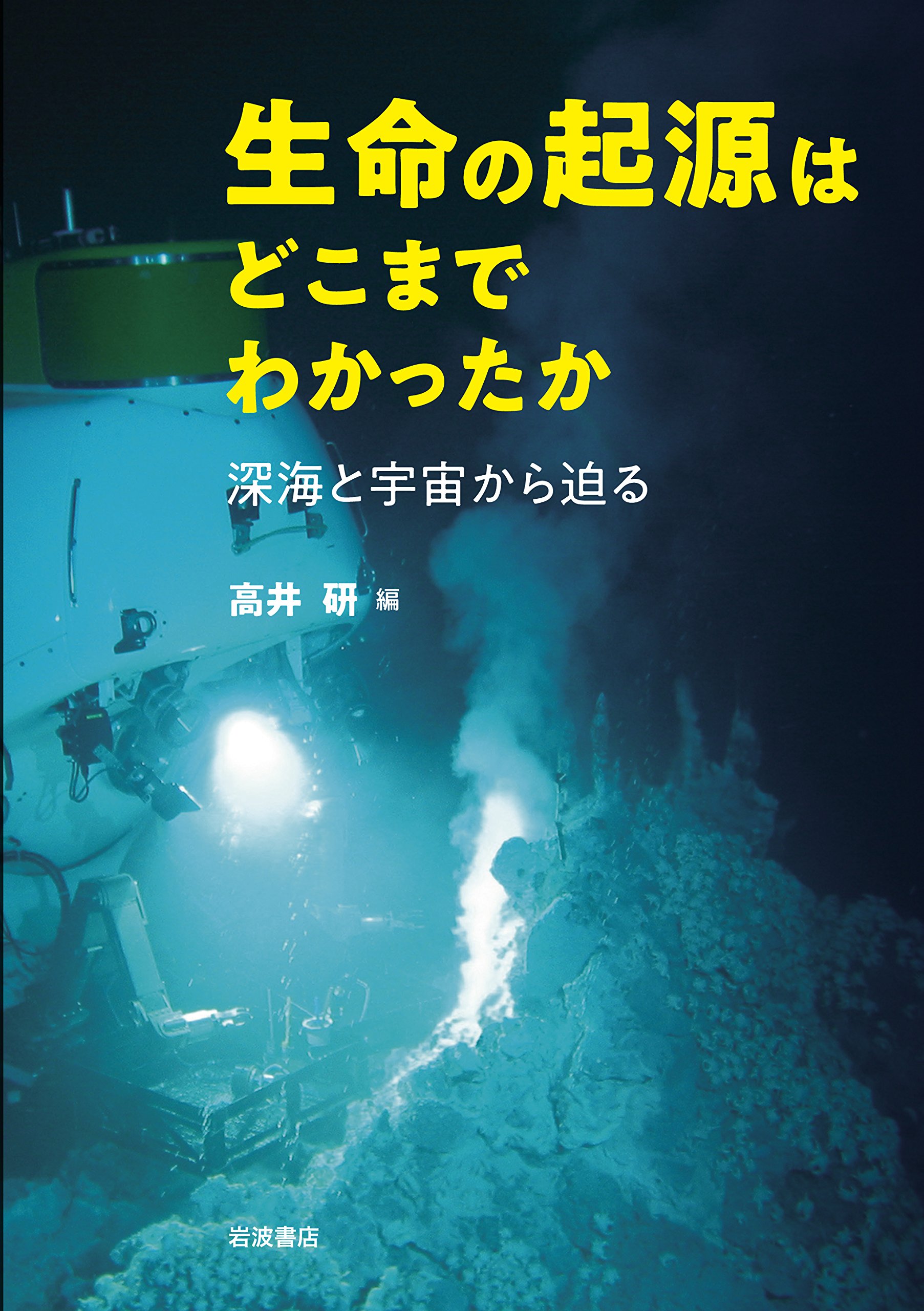

ー
Finally, what are your goals for the future?
Mr. Takai
I created a new research division at JAMSTEC, called the Institute for Extra-cutting-edge Science and Technology Avant-garde Research (X-star). Currently, I am serving as its “guardian deity.” Not much of my work now is about doing the research I love. My main focus is figuring out how I can help researchers to do creative “bottom up” research. So, I’m busy with a variety of tasks related to this.
But I want to continue doing a little of my own research too. Or perhaps make some voyages to the deep sea, which I have grown to love. And I haven’t been able to verify all the scenarios I envisioned for the origin of life yet, so I hope to continue this work, too. For this, I have to leave my mark on the field, and I need to create and protect a system that allows me to conduct such fascinating research.
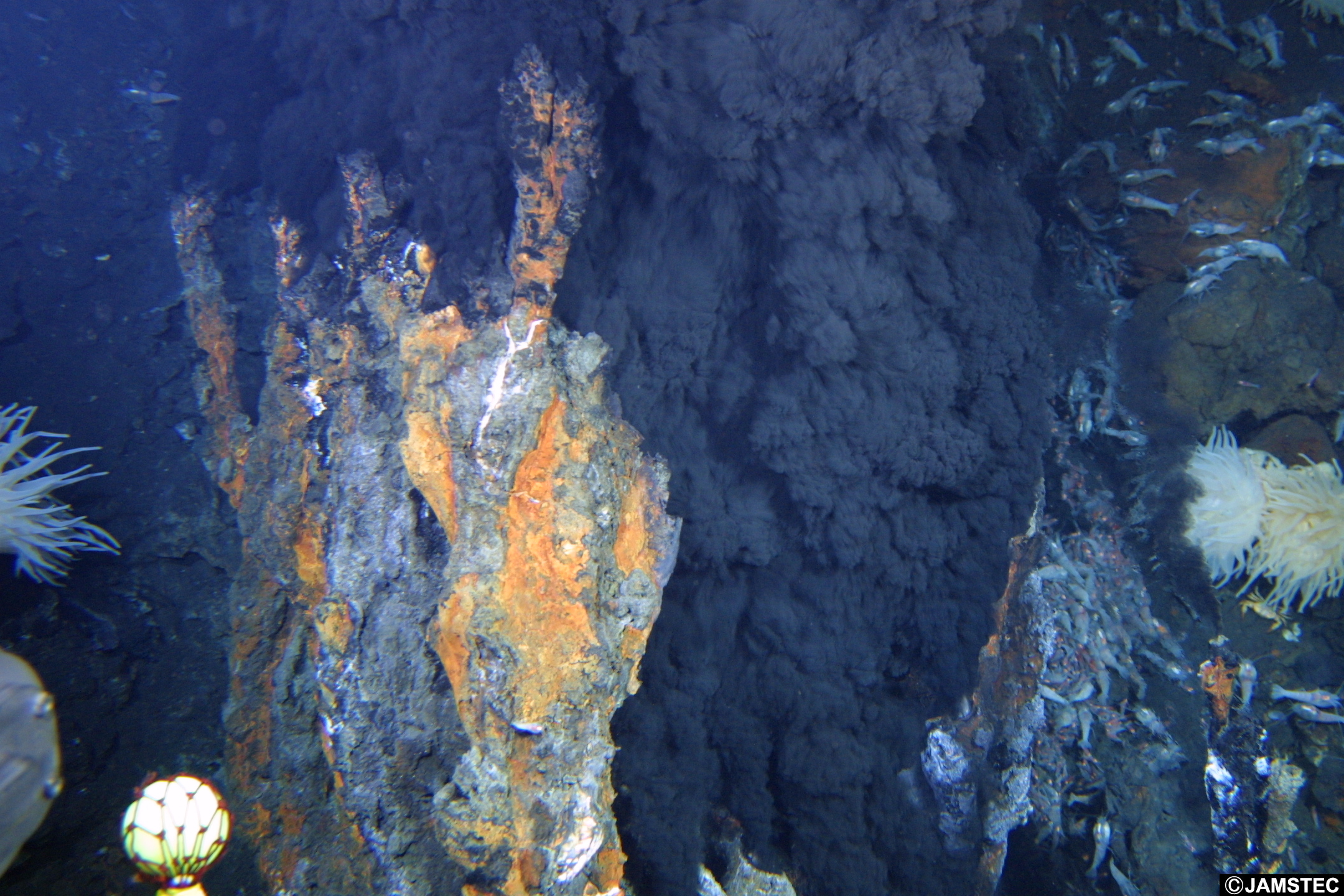

©︎ JAMSTEC
I was very impressed today with your story about the moment when you realized that you really loved the ocean!



Mr. Takai
I often say that my favorite manga is “SLAM DUNK.” The protagonist starts playing basketball because a girl he likes is in the team. So, his motive is impure (laughs). But eventually, he has to make a decision that will affect his career in basketball. That’s when he realizes that he truly loves basketball.
You will never figure out whether you like something so instantly. You might start out with all kinds of irrelevant thoughts and misconceptions in your head, but when you throw yourself into something fully, you will clearly know if you like it or not. Ultimately, I don’t think you will know whether you like something or not unless you work hard at it.
Initially, you might do something just for the money, or for appearances, or whatever. But in the process of dedicating yourself to it completely, you will discover something that you really like. I think the same thing applies to meeting people. Even if you haven’t met one good person in 30 years, you might suddenly meet one. You just never know when that moment will come. So, my view is that whatever happens, we have to live life as wholeheartedly and positively as possible.
It isn’t easy to know what you want to devote your life to, so don’t be afraid if you haven’t figured it out while you are young. If you live your life all-out, you will definitely find it.
That’s a wonderful message. In whatever circumstances, just start something and keep working hard at it. It doesn’t even matter if your initial motive is not pure.



Mr. Takai
Perhaps the more impure you start out, the more pure you will end up becoming (laughs).
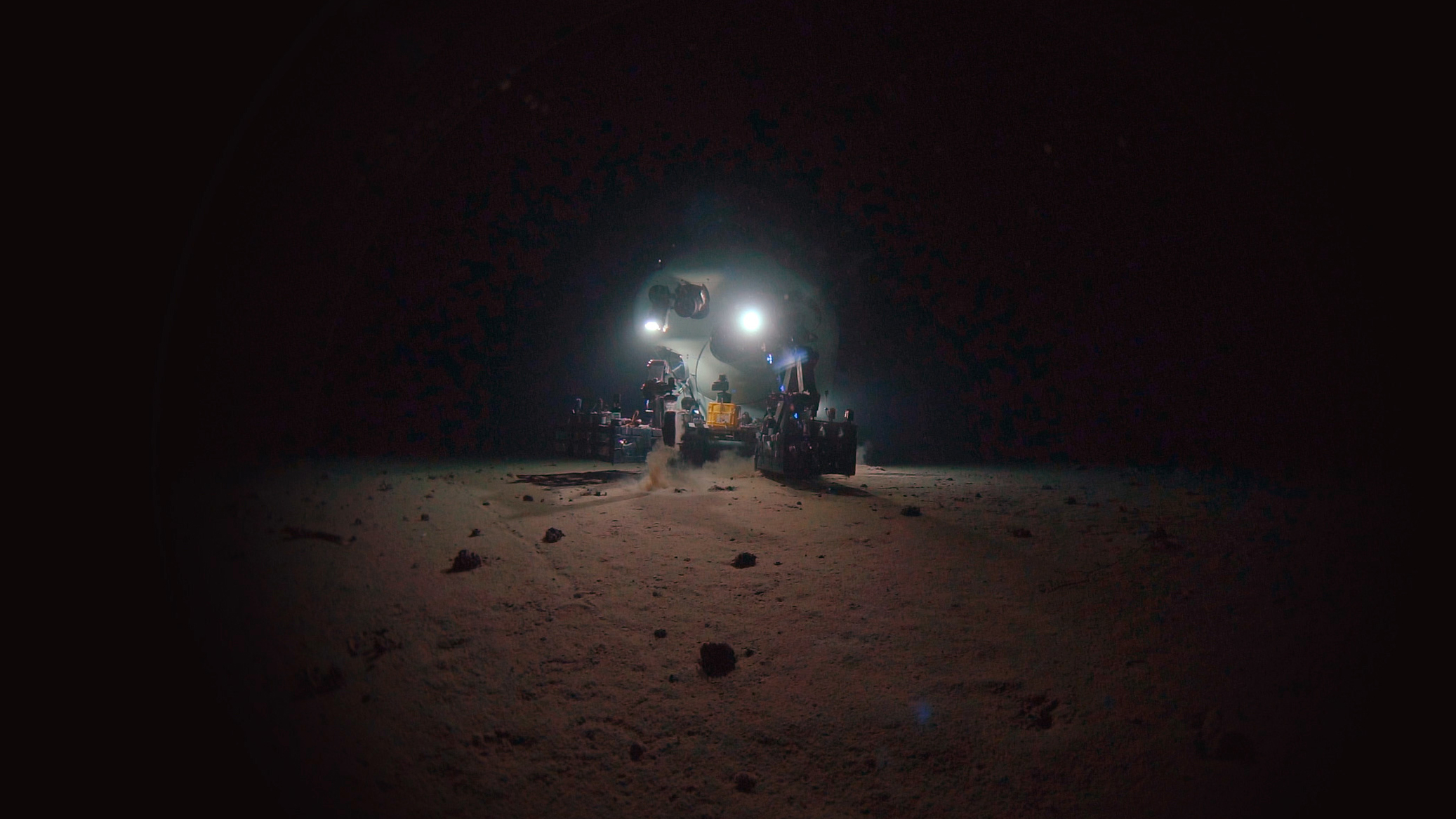

In his discussion on the question of “what is life?” Dr. Takai’s perspective of seeing the world like an explorer was fascinating. From Enzo’s point of view, the discussion helped him to reflect on his identity and roots; to think about who he is and where he came from.
According to Dr. Takai, the origin of life lies in chains of chemical reactions. Enzymes were created by nature to execute and unerringly repeat the chains of chemical reactions. An enzyme is therefore a biological substance that forms into groups to work on the activities that power life.
To sustain life, enzymes need to function in a systematic way. According to Dr. Takai, genes serve as a mechanism for creating this strict discipline. From the perspective of enzymes, genes might seem like “gods.”
Space exploration is an expensive enterprise, but its adventurous spirit is compelling, because what it reveals adds depth to our vision of life on Earth.
The whole of the natural world, not just life itself, is a mass, or network, of chemical reactions. And as a key part of this natural order, enzymes fulfill a vital role. Enzo can be very proud!
Enzymes are active in every aspect of our world, and we are seeking new possibilities for them.
In this corner, we visit people who are currently active in various fields with "Enzo" and ask them about their stories.

